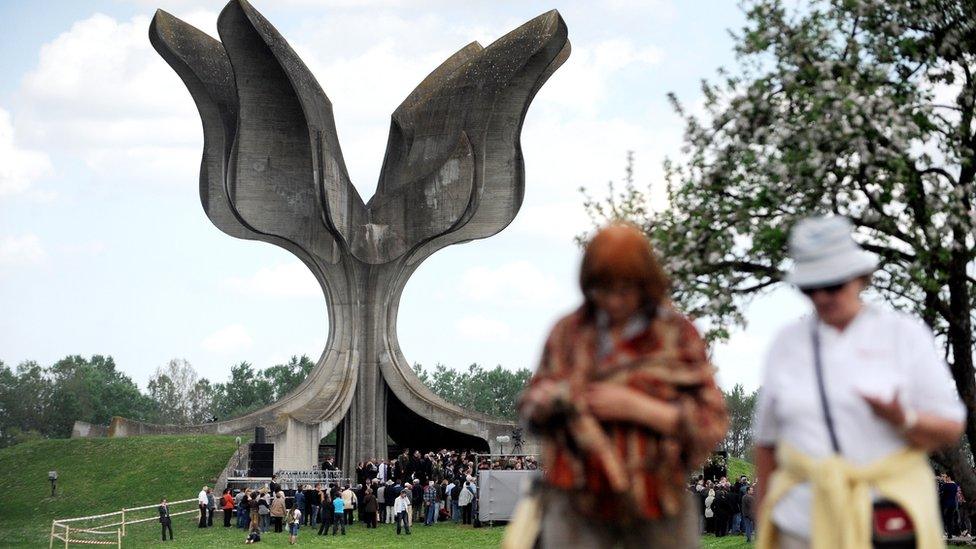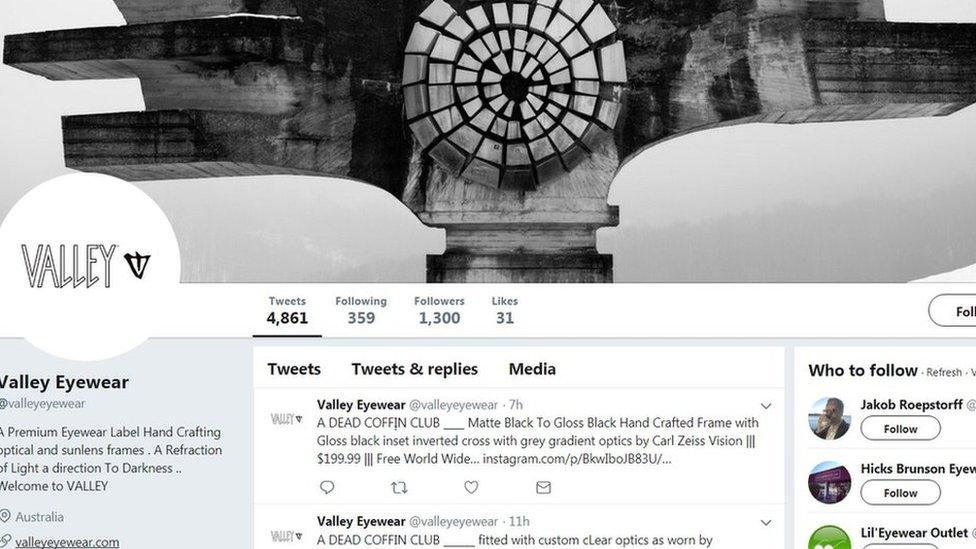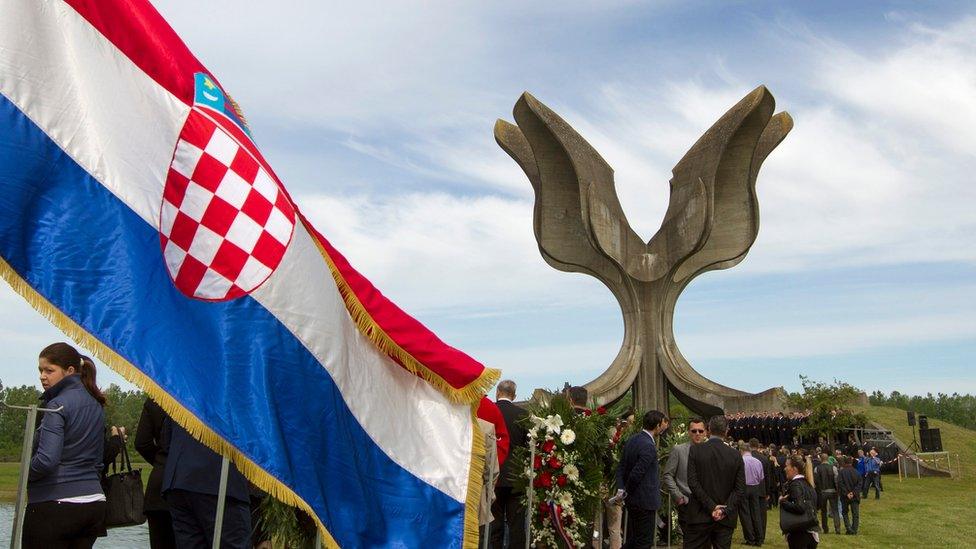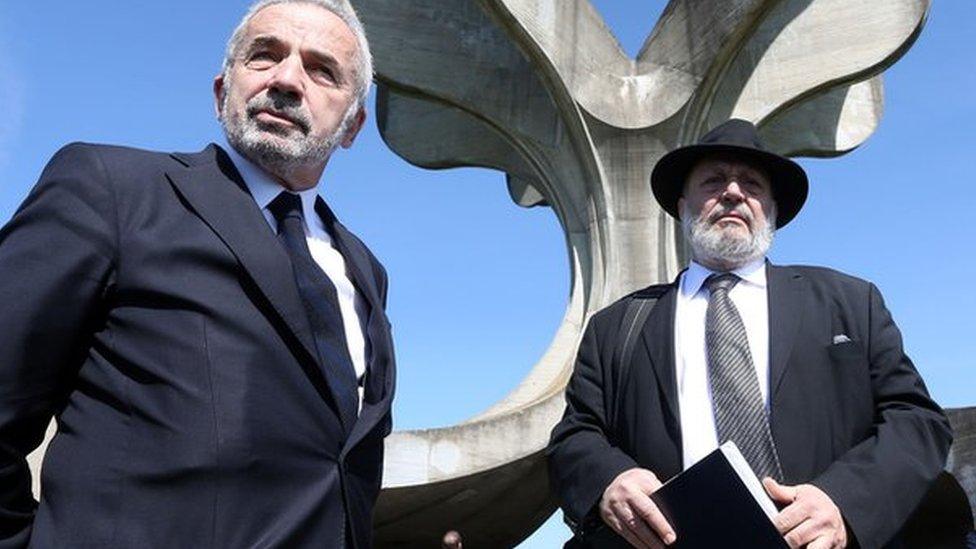Australian sunglasses firm apologises for Jasenovac ad campaign
- Published

Tens of thousands of people were murdered at the Jasenovac death camp from 1941 to 1945
An Australian glasses company has removed part of an advertising campaign filmed at a death camp in Croatia, after a series of complaints.
Valley Eyewear put up a series of videos taken on a trip to Croatia and Bulgaria, using footage of models in sunglasses at communist-era memorials.
But some of the pictures were from Jasenovac, a World War Two death camp run by Croatia's Nazi puppet regime.
The firm apologised, saying its aim was to show respect for the architecture.
"We didn't know it was a death camp at the time," Valley Eyewear director Michael Crawley told the BBC, referring to the company's advertising trip to the Balkans. "We didn't want to offend anybody, we're a respectful brand. I apologise to anyone who's offended."
They had visited the Jasenovac memorial for half an hour when it was closed, he explained.

The footage from Jasenovac was eventually removed and replaced with images from another monument by the same sculptor
The concrete flower memorial was created by Yugoslav-era sculptor Bogdan Bogdanovic. Another concrete monument in Croatia by Dusan Dzamonja is also featured in the campaign. The structures have become known as "Spomeniks", after the word meaning memorial.
"I was planning to do a short film on the Spomenik architecture. We knew these had been put in place as symbols of unity and respect," Mr Crawley explained.
The result was a video of a model walking through a snow-covered field close to the Jasenovac memorial on a winter's day.
Allow X content?
This article contains content provided by X. We ask for your permission before anything is loaded, as they may be using cookies and other technologies. You may want to read X’s cookie policy, external and privacy policy, external before accepting. To view this content choose ‘accept and continue’.

But the advertising material from Jasenovac prompted criticism on social media. The idea was condemned as morbid, offensive and hideous.
The company said it decided to remove the material when the head of the memorial site made the request.
Valley Eyewear's website now shows images from Dusan Dzamonja's Croatian memorial to the partisans of Moslavina, who rose up against fascism, and Georgi Stoilov's 1981 Budludzha monument to the founding of what became Bulgaria's communist party.
What happened at Jasenovac?
For almost four years from 1941, this concentration and death camp was run by the Croatian fascist Ustashe movement, which was allied to Adolf Hitler's Nazi regime.
They murdered tens of thousands of Serbs, Jews and Roma (Gypsies), as well as Croats opposed to the regime.
The number of victims may never be known, but the US Holocaust Memorial Museum estimates that between 77,000 and 99,000 people were murdered in the network of camps at Jasenovac. The memorial site has identified the names of 83,145 men, women and children who died there, external but says that list is not complete.
What happened at Jasenovac continues to arouse controversy.
Croatian Serbs and Jewish representatives have boycotted official commemorations at the site for several years. They accused Croatia's government of downplaying the crimes of the Ustashe movement and tolerating historical revisionism.
- Published22 April 2016

- Published15 April 2016
